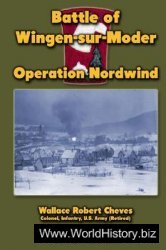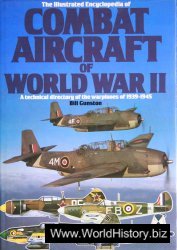L. H. Holden forms an air transport operation bearing his name in 1929 to haul freight from Port Moresby to the mining towns of New Guinea. Upwards of six tons of cargo are carried per day in 1934-1935. The company is purchased by Guinea Airways (Pty.), Ltd. in 1936.
HOLIDAIR, LTD.: Canada (1980-1990). Established at Edmonton, Alberta, in the fall of 1988, Holidair, Ltd. is a wholly owned subsidiary of Harry Borenstein’s holiday company Travel ‘N’ Save. Joe Garrihy is appointed president and an ex-Iberia Spanish Airlines (2) (Lineas
Aereas de Espana, S. A.) DC-8-52 is purchased. When Spain delays in delivering the Douglas, the company is forced to contract with a U. S. firm to fly a Lockheed L-1011 TriStar 1 on a short - term basis in order to begin its mid-December Honolulu operations.
Several flights are made, each costing in excess of C$200,000. The DC-8-52 arrives after Christmas, allowing the American Lockheed contract to be concluded. Christened Aaron, the former Spanish jetliner now initiates tour flights from Calgary and Edmonton to Honolulu and Can-cun, Reno, and Las Vegas.
In the summer of 1989, charter and inclusive-tour flights begin from Vancouver to Prestwick, London, Amsterdam, or Frankfurt, all via Edmonton. Operations cease in response to the boost in fuel prices and costs associated with the invasion of Kuwait by Iraq on August 2, 1990.
HOLIDAY AIRLINES (1): United States (1960). The first U. S.-based Holiday Airlines is established at Pomona, California, on April 1, 1960, to provide scheduled passenger and cargo flights to Santa Catalina. Beech 18 flights commence on April 15 and continue until October 10, when the company shuts down.
HOLIDAY AIRLINES (2): United States (1965-1966). Holiday Airlines (2) is set up at Oakland, California, in late spring 1965 to provide scheduled commuter service. Regular de Havilland DH 104 Dove 1 flights commence on June 14, linking the company’s base with Red Bluff via Marysville and Chico. Unable to achieve viability, the airline folds before its first anniversary.
HOLIDAY AIRLINES (3): United States (1968-1975). Holiday Airlines (3) is created at Lake Tahoe, California, in 1968 to provide scheduled passenger services linking that destination with San Francisco, Sacremento, San Jose, Los Angeles, Burbank, and San Diego. Revenue operations commence in November with a pair of Lockheed L-188A Electras, including the very first of the type, purchased from Pacific Southwest Airlines (PSA) on October 22.
Flights continue apace during the remainder of the decade and into the 1970s. In 1974, a third L-188A is acquired and is employed to inaugurate services to Lake Tahoe.
Operations continue apace until 1975 when, in deep financial difficulty, the company is forced, in February, to shut its doors. Its southern routes will subsequently be awarded to Pacific Southwest Airlines (PSA).
HOLIDAY AIRLINES (4): United States (1970). This short-lived Holiday is set up at Monticello, New York, in the spring of 1970 to provide scheduled passenger and cargo services from Sullivan County Airport to New York (LGA). Also known as Catskill Holiday Airlines, the company duly inaugurates daily Beech 99 roundtrips, but these are discontinued in late fall.
HOLIDAY AIRLINES (5): United States (1979-1989). Dominick Borzomati founds the longest-lived U. S.-based Holiday Airlines as a wholly owned subsidiary of Clinton Industries at Newark in the spring of 1979. With a goal of providing scheduled passenger services to Baltimore (BWI) via Montgomery, and to Atlantic City from Baltimore (BWI), the new commuter inaugurates daily services in April employing a fleet of 2 Piper PA-31-350 Navajo Chieftains.
Within two years, frequencies have risen to thrice daily. Although the private company chooses not to release traffic figures in 1979-1981, in 1982 it reports to the CAB that 15,139 passengers have been transported on the year. During these years, service is started to Hartford and Richmond, and seasonally, to Martha’s Vineyard and Hyannis.
Airline employment stands at 40 in 1983 as the Pipers are replaced by two de Havilland Canada DHC-6-200 Twin Otters.
Customer bookings jump 50% to 19,500.
Flights to Atlantic City and the recently introduced Richmond market are suspended in 1984.
Enplanements balloon by 45.1% to 33,528.
A third Canadian turboprop joins the fleet in 1985 as the New Jersey-based airline boosts its passenger boardings 9.9% to 36,848.
Airline employment jumps 100% in 1986 to 70 as 3 more Canadian turboprops are acquired. Service is extended to Providence, Rhode Island.
Customer bookings increase by 53.7% to 56,131.
Airline employment is cut by 35.7% in 1987 to 45. Still, passenger boardings accelerate 26.3% to 70,902. The fleet in 1988 continues to include only the two Twin Otters.
Enplanements for the year fall by 10.6% to 63,396.
The Clinton Industries subsidiary is sold to new owners in the spring of 1989. They immediately order four Beech 1900s. Employing them to replace the DHC-6-200s, they inaugurate services to Nantucket, Providence, Hartford, and Martha’s Vineyard during the summer.
Internal discord, argument, and disagreement between the owners begin in the fall, leading to a permanent suspension of operations on December 18. Through August, when the carrier stops supplying its figures, passenger boardings are down 30.9% to 31,553.
HOLIDAY AIRLINES, A. S.: Turkey (1994-1996). Holiday is established at Istanbul in the first quarter of 1994 to offer passenger charter and inclusive-tour flights to various European destinations. Arrangements are completed to charter two Airbus Industrie A320-231s from Mexicana Airlines, S. A. de C. V., while the manufacturer provides a former Delta Air Lines A310-324 under a short-term contract. The latter is delivered first and is employed to launch revenue flights on June 23. The summer season is not profitable. Unhappily, the company is forced to stop flying in November when the Mexicana aircraft are returned for lease nonpayment.
The fleet is significantly altered in early 1995. Brought in, again under lease, are one each A300B2-1C and A300B4-2C from Air Inter, S. A., a Tupolev Tu-154M from the Russian carrier Alak Airlines, and a Yakovlev Yak-42 from Air Ukraine. When the summer holiday calendar begins at the end of March, flights are again undertaken to a variety of locations in Europe, particularly Germany.
On February 6, 1996, a Birgenair, A. O. B-757-225 wet-leased to Alas de Transport Internacional, S. A. crashes off the Dominican Republic. The German media now begins an expose on charter airlines, focusing on those from Turkey. In the process of revelation, newsreaders brand all Russian aircraft as unsafe for use in European skies. This uproar causes Holiday Airlines to replace both its older Airbus and the Russian aircraft with a purchased Boeing 737-217, another chartered A300B4, and a Lockheed L-1011 TriStar 1 first flown by Eastern Air Lines.
On September 10, German aviation authorities withdraw permission for Holiday to land at any airport in the Federal Republic. Holiday sues to regain this lost authority, but is turned down by a high court in November. With its principal European market out of bounds, the company has no option but to shut down and liquidate.
HOLIDAY EXPRESS HX (DEUTSCHE LUFTVERKEHRS, GmbH. & CO.): Germany (1962-1988). Organized at Hamburg in 1962 as the air taxi operator General Air, this company is reformed and renamed Hadag Air, GmbH. in 1974. The decision is now taken to undertake scheduled commuter operations. Managing Director York C. Hevelke’s de Havilland Canada DHC-6 Twin Otter and light Cessna equipment initiates services linking the company base with Helgoland, Westerland, Sylt, Dortmund and Wyck.
In the interest of promoting new services, the company is renamed Holiday Express, GmbH. in 1983. The fleet, upgraded by the addition of a Dornier 228-100, undertakes new services to Rotterdam. Flights to Goteborg and Hanover begin in 1986, by which time the Canadian turboprop has been withdrawn in favor of two Britten-Norman BN-2 Islanders and a Fairchild-Swearingen Metro II.
Fleet and route changes continue apace in 1987 as the BN-2s are replaced by a Dornier 228-201 and Antwerp succeeds Goteborg and Hanover as destinations. In an effort to capitalize on the idea of providing an air link between the old trading cities of northern Europe, the carrier is reformed yet again in early 1988 and renamed Hansa Express, GmbH.
HOLLAND AERO LINES, B. V. (HAL): The Netherlands (19781988). Holland Aero Leasing, B. V. is formed in 1978 to undertake contract charter and leasing operations. Lightplane flight activities begin in July. Between 1979-1982, nonscheduled flight opportunities are pursued with a fleet comprising Piper PA-31-310 Navajo and PA-31-350 Navajo Chieftain equipment. When Air U. K., Ltd. surrenders its Southend-Rotterdam route in September 1983, HAL bids for and receives the service.
During 1984, corporate reorganization to meet the scheduled challenge is undertaken. A new company is formed; Holland Aero Leasing remains as a division while the new airline division, Holland Aero Lines, B. V., is formed to assume the ex-Air U. K., Ltd. operation. Theo Scholes becomes managing director. Two GAF Nomad 24As, the first of the Australian-built commuters to be purchased by a European regional, are acquired and readied for service.
Scheduled Rotterdam-Southend and Norwich service is inaugurated on February 4, 1985. During the summer, two Avions de Transport Regional ATR42s are ordered and are received late in the year.
Rotterdam-Paris and Frankfurt ATR42 services begin in January and July, 1986, respectively. Groningen, Norwich, and Southend join the route network in 1987. Unable to generate the traffic to cover the costs of expansion, the company enters receivership in early 1988.




 World History
World History









